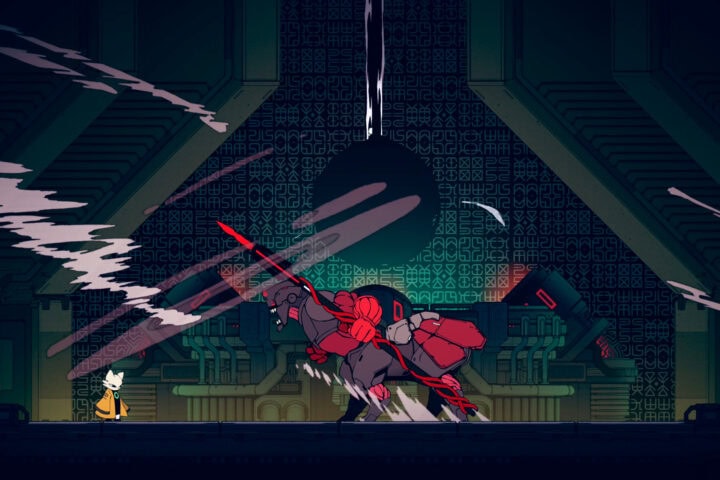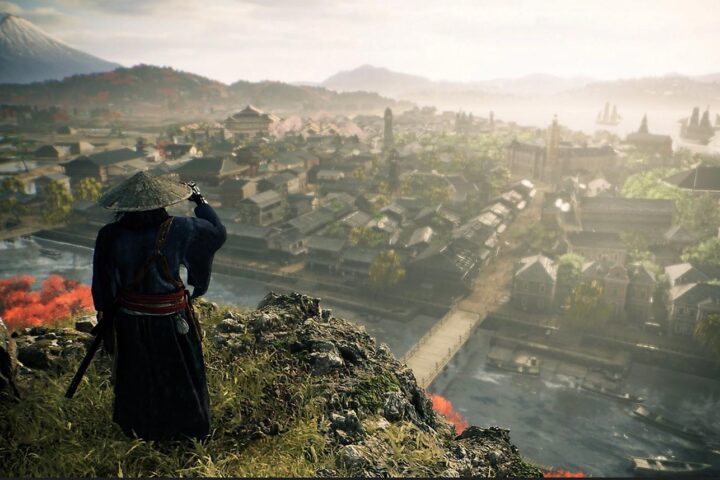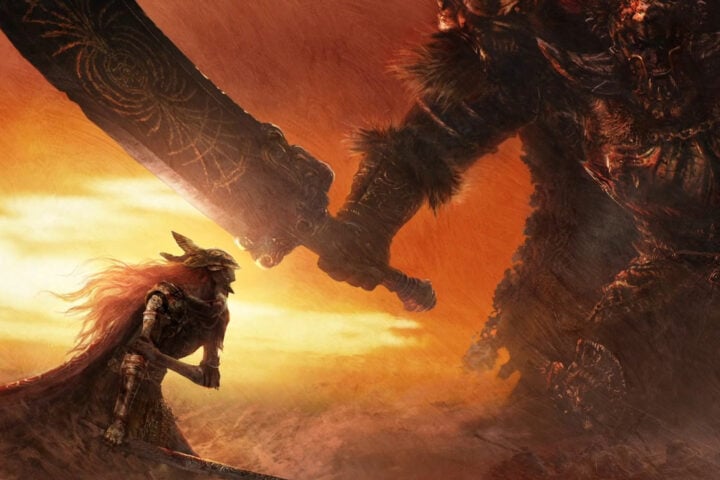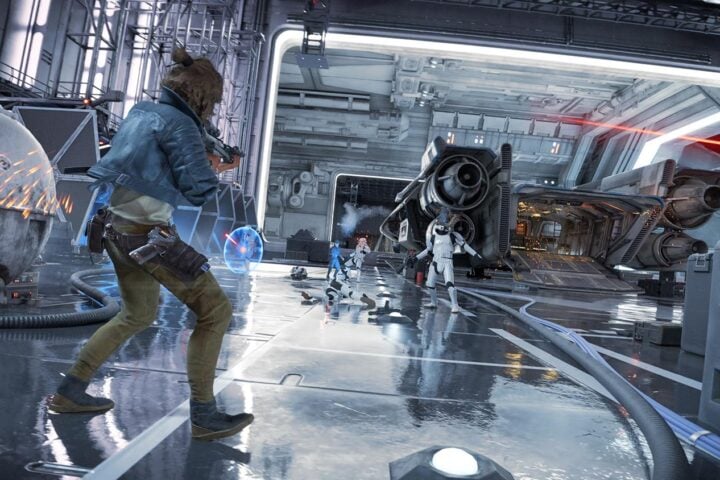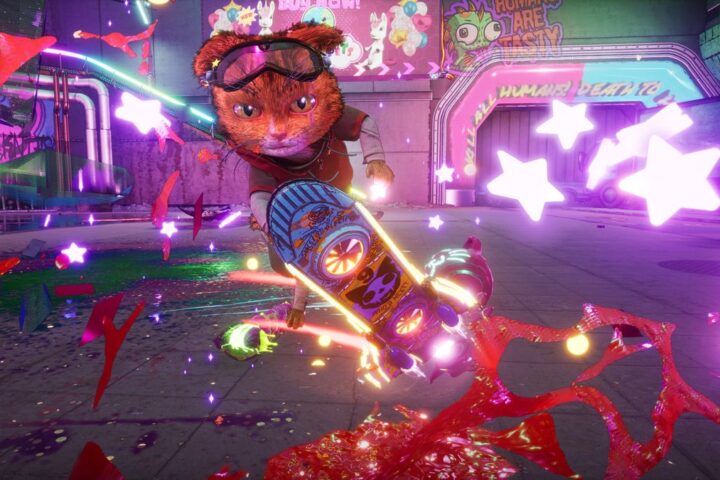Early into Point N’ Sheep’s Bloodless, the ronin Tomoe finds a sword thrust into the ground. “There was a time I thought I needed one of these,” she thinks to herself. The line is double-edged: Tomoe, haunted by the carnage she once wreaked in service to an ambitious master, has forsworn violence, but when forced to fight, she skillfully defends herself with nothing but her bare hands. The weapon is useless to her both morally and practically.
As Tomoe gets caught in the crossfire of various factions vying to shape the future of Bakugawa, a land depicted with a minimalist color palette and chunky pixels, striking visual flourishes give shape to her psyche and perspective. When a man with a grudge reminds her of the atrocities she once helped commit, the screen flashes crimson, turning the light of a nearby pair of braziers blood red. Elsewhere, after Tomoe witnesses a murder, the victim’s stunned comrades stand over his body. If you return later, you find the mourners where you left them, their continued shock providing a tragic portrait of death’s permanence and the mindlessness of war.
Such scenes test Tomoe’s commitment to pacifism, as do the battles that constitute much of Bloodless. As streams of warriors throw themselves against Tomoe, she knocks them aside with nonlethal punches and her signature move, a combined dash and parry that, when timed correctly, disarms foes and sends them running. The deflection-focused combat is satisfying during one-on-one duels, which bristle with the absorbing tension of a fighting game. There’s an almost balletic flow to the footsies you can play—carefully managing the distance between Tomoe and her opponent, sneaking in blows, and baiting out attacks to riposte.
Unfortunately, Bloodless gradually drifts away from methodical clashes and toward irritating brawls, often pinning you in cramped spaces littered with spammy enemies and environmental obstacles that blend into the background. This lazy encounter design, along with occasional fuzziness in the controls—namely, it can feel finicky to aim Tomoe’s attacks toward the right target when there are multiple in the frame—increasingly dull the excitement of combat.
Over the course of Bloodless, Tomoe leads dozens, if not hundreds, of challengers to flee from her in fear. Their apparent lack of conviction—their willingness to take flight rather than die fighting—suggests a commentary on violence that the game fails to flesh out. Tomoe’s exchanges with new and old acquaintances, which transpire in sluggish scenes filled with trite dialogue, are similarly devoid of depth, texture, and specificity. Bloodless clearly has something to say about the cataclysmic potential of power and the cycles of suffering it locks people into, but by making its world feel universal—like it could be anywhere—it ends up nowhere at all.
This game was reviewed with code provided by Sandbox Strategies.
Since 2001, we've brought you uncompromising, candid takes on the world of film, music, television, video games, theater, and more. Independently owned and operated publications like Slant have been hit hard in recent years, but we’re committed to keeping our content free and accessible—meaning no paywalls or fees.
If you like what we do, please consider subscribing to our Patreon or making a donation.


